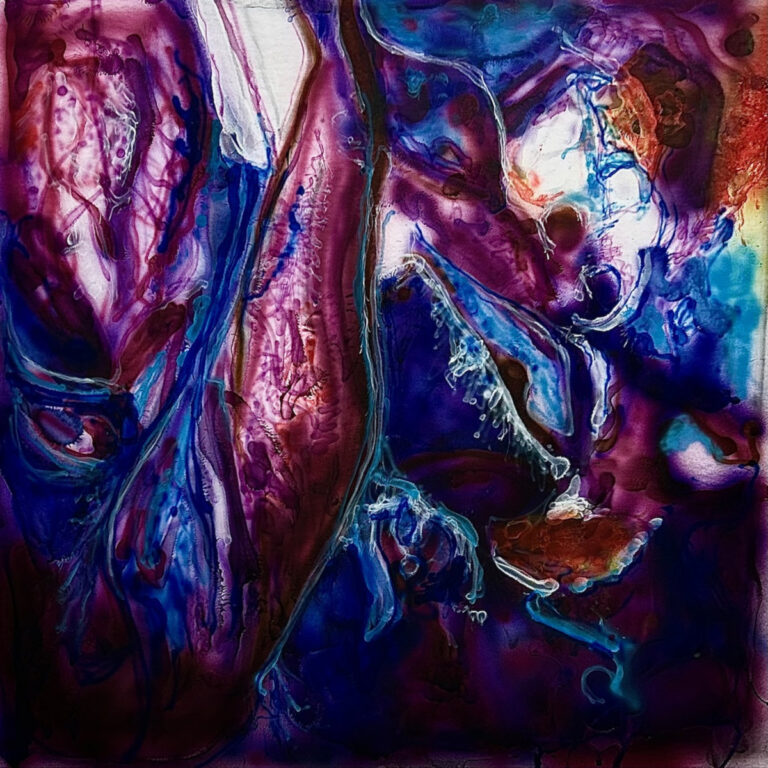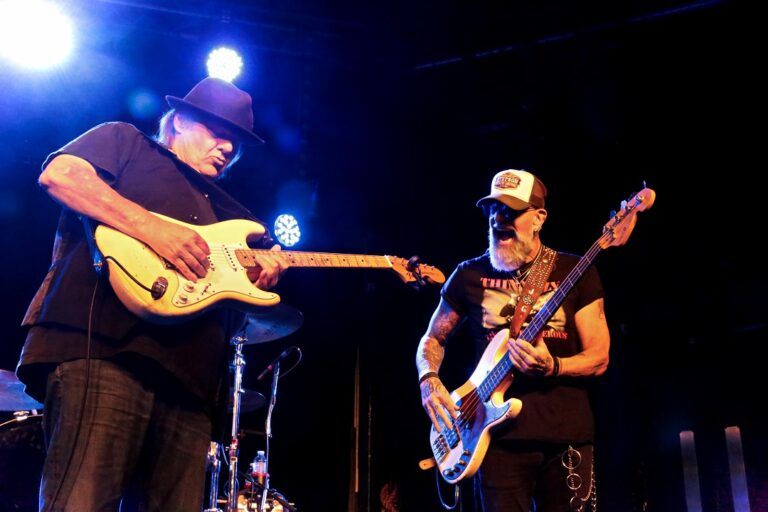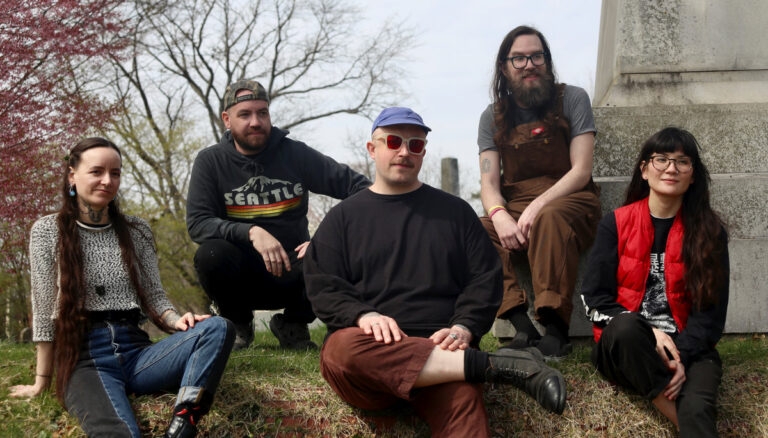With their ninth album, Skeleton Dreams (reviewed here), The Beauty Of Gemina have once again expanded upon their remit, exploring a range of sounds from post-punk to ambient across fourteen tracks. Yet, for all the influences quietly alluded to by the band, the album (beautifully produced by the band’s charismatic frontman, Michael Sele), remains coherent – a journey that the listener may undertake with its creator.
A slow burning gem, Skeleton Dreams is a wonderfully oblique experience and so we were grateful indeed that Michael gave us the opportunity to discuss the album’s gestation, the song-writing process of the band and much more in this brand new interview.

The band, since its inception, seems to always be quietly evolving with each album – do you find that you subtly absorb influences from the music that you hear, or is it a more conscious process of seeking out ways to bring new elements into the band’s oeuvre?
Michael Sele: I founded TBOG in 2006 with a few songs in my pockets together with drummer Mac Vinzens. We started this adventure not knowing how far the travel would go. Over time, many things have changed. At the beginning, computer, samples and all these technical toys were very important to me. There could not be enough tracks. Particularly, on the first 3 albums you hear that clearly, but then the reduction of the electronic elements started, and the organic sound pattern were becoming much more important. Changing the “clothes” of the music with every record was a natural process for me and of course the fans needed a lot of patience sometimes, but it was my way as a songwriter, and I had no other choice.
Where most bands employ a more typical verse-chorus-verse structure, you take a more linear approach, telling a story over the course of the song, but employing repetition at key points instead – it’s an unusual style that feels more poetic than lyrical – do you draw influence from literature and poetry and, if not, could you offer some insight as to how you developed your lyrical style.
Michael Sele: When I start working on a song, the lyrics are very important to me. When I’m jamming or playing on my guitar or with the piano, I’m always searching for a little phrase or a few words who matches with the musical idea. To create the perfect atmosphere to transport all the emotions is the most important aspect in my writing. From this point of view, I agree that the style is more poetic than lyrical.
The album includes a Sisters of Mercy cover – is it a challenge for you to take someone else’s song and inhabit it in your own unique way and what sort of elements encourage you to tackle another artist’s music?
Michael Sele: By the way, my first cover was the song “Listening Wind” of the Talking Heads, which I realised on The Myrrh Sessions album in 2013. This happened after quiet a long period of writing my own songs. It was important for me to find my own musical identity first, my own language and style. During working on the Skeleton dreams album, a German music magazine asked me to do a Sisters cover for a special compilation they planned. At the end, they changed their plans and so I had this cover of “Nine while Nine” and we all liked the version so much that we put it on the record.

Andi Zuber obviously put a lot of effort into designing the album’s packaging – how involved were the band in the design process and how important is it to you to ensure that your work is packaged effectively?
Michael Sele: Working with Andi was very inspiring to me and we had a lot of ideas and different drafts. At the beginning the “Skeleton” was brought into focus in all sketches but my goal was to find a design which was not too concrete and to concentrate more on the words. One day Andi came with this idea designing the artwork with the huge letters and I was enthusiastic.
All the music is credited to you – could you tell us a little about the process. Do you come up with a basic sketch and then work through it with the band, or is the initial drafting process more involved than that?
Michael Sele: Since the last 3-4 years I’m composing all songs only on the guitar or piano with voice. I’m recording them on my smartphone and I‘m going only to the studio if music and lyrics are finished. I really try to simply record the things or add the missing elements of the song. In the studio, I like to work with a lot of different guest musicians and live also in different formations, from reduced solo and trio performances to an ensemble with 7 (additional violin, cello and even saxophone) musicians on stage. The line-up was differently on every record and tour. Mac Vinzens on drums is the only constant member of TBOG since the beginning.
Given that the lyrics are such a key part of the material, do you develop your albums with a loose conceptual theme in mind and are you inspired by the music or do the words lead to the music?
Michael Sele: This time the title of the album had a main impact and was a kind of a guidance to me. As a result, the first vocal line on the album is “I close my eyes for a thousand years … “and it takes the listener on a mystical and pulsative journey through the night. Reality and illusion become difficult to differentiate. The past, the future, life – death or dissolution. Asking questions is one of the main themes of the Skeleton Dreams concept.
The track The World Is Going On is particularly lovely and the stripped-down approach really suits you – have you considered some sort of acoustic rendering of songs form your back catalogue (the unplugged approach), or do you prefer to focus on future endeavours?
Michael Sele: In 2022, I will celebrate 15 years of playing live with TBOG and I’ve got some ideas to do a few very special concerts. To reinterpret songs from the past will be part of it.
You also took on the duties of producer and engineer, keeping the recording and mixing of the music in house – is it important to you to have that level of control over your artistic output or is it just a more effective and economic way to work?
Michael Sele: For me it’s not unusual at all to do more than just singing and playing an instrument. I always was interested in the technical aspects of a production and over the years I become a quiet good engineer and producer as well. It was a natural process and as you said a really very effective and economic way to work.
Like so many artists who have released works of late, the album has come out at the height of the pandemic – how has this impacted you and do you have any plans to, for example, offer some sort of internet show for your fans in the absence of genuine live material?
Michael Sele: The last year was full of contrasting emotions. There were very stressful moments but also moments full of light. For example, seeing my kids during the home-schooling period was an interesting experience. As a family, we also had the time to rediscover a lot of things together. Due the pandemic we had to postpone all shows of the Skeleton Dreams Tour last year. It was a very sad and frustrating decision.
Fortunately, last December I got an invitation to play a special streaming solo concert in a huge and famous studio close to my hometown. This concert was a kind of recording session and the audience could buy a link to be part of it and watch and listen during the recording process. That was a great challenge but also an amazing experience.
Have you been able to use the downtime in other ways – for example writing new material?
Michael Sele: Honestly, I did not write even one single note in the last couple of months, but I finally finished my lyric book with all 96 song lyrics incl. a German translation. It was a huge project and I’m happy that I could realise it right before Christmas.
Any final words for your UK fans?
Michael Sele: Listen to my new album “Skeleton Dreams”. Let yourself be kidnapped and guided to the Geminaland; you will not regret it! Share my music and who knows maybe one day we can come to perform the music live in the UK. It would be a great privilege!




